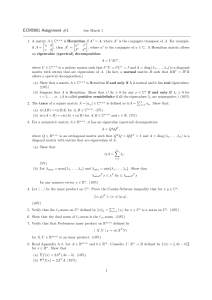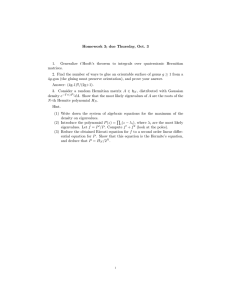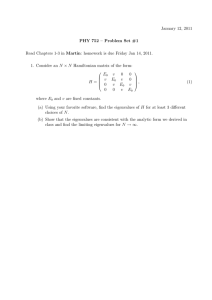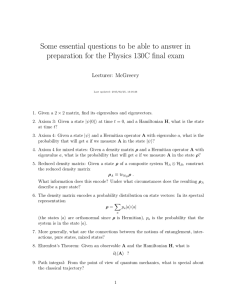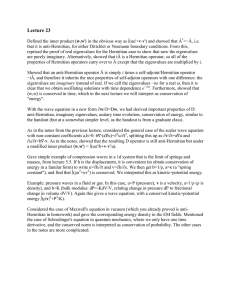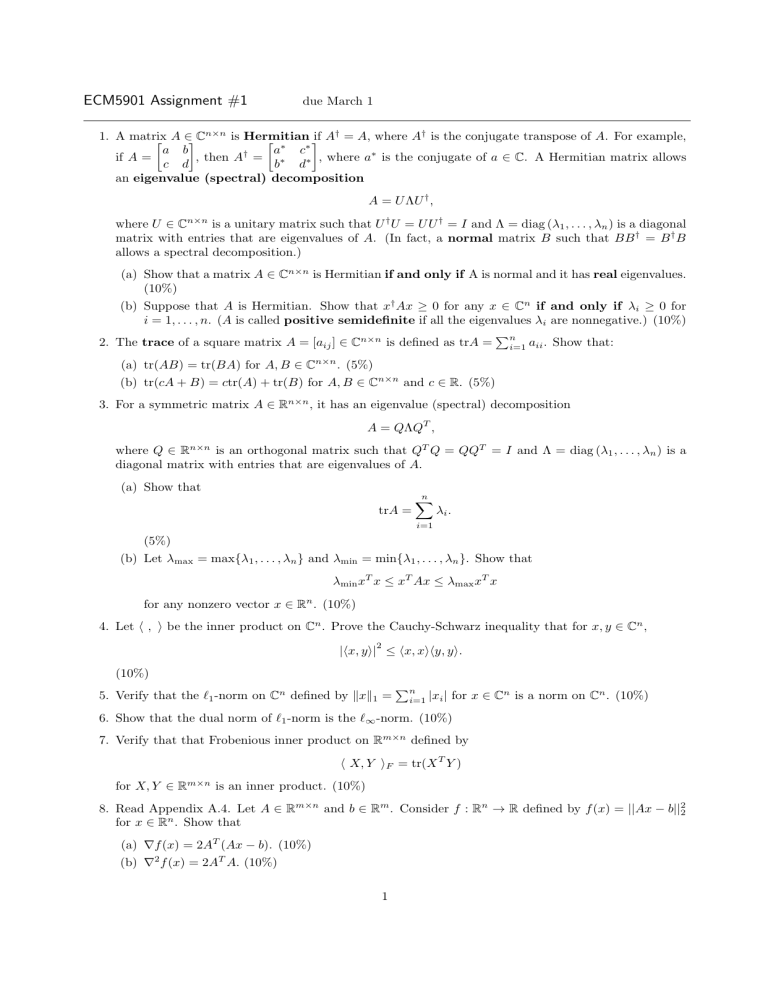
ECM5901 Assignment #1
due March 1
n×n
†
†
1. A matrix
is Hermitian
A ∈ C
∗
if A = A, where A is the conjugate transpose of A. For example,
∗
a b
a
c
if A =
, then A† = ∗
, where a∗ is the conjugate of a ∈ C. A Hermitian matrix allows
c d
b
d∗
an eigenvalue (spectral) decomposition
A = U ΛU † ,
where U ∈ Cn×n is a unitary matrix such that U † U = U U † = I and Λ = diag (λ1 , . . . , λn ) is a diagonal
matrix with entries that are eigenvalues of A. (In fact, a normal matrix B such that BB † = B † B
allows a spectral decomposition.)
(a) Show that a matrix A ∈ Cn×n is Hermitian if and only if A is normal and it has real eigenvalues.
(10%)
(b) Suppose that A is Hermitian. Show that x† Ax ≥ 0 for any x ∈ Cn if and only if λi ≥ 0 for
i = 1, . . . , n. (A is called positive semidefinite if all the eigenvalues λi are nonnegative.) (10%)
Pn
2. The trace of a square matrix A = [aij ] ∈ Cn×n is defined as trA = i=1 aii . Show that:
(a) tr(AB) = tr(BA) for A, B ∈ Cn×n . (5%)
(b) tr(cA + B) = ctr(A) + tr(B) for A, B ∈ Cn×n and c ∈ R. (5%)
3. For a symmetric matrix A ∈ Rn×n , it has an eigenvalue (spectral) decomposition
A = QΛQT ,
where Q ∈ Rn×n is an orthogonal matrix such that QT Q = QQT = I and Λ = diag (λ1 , . . . , λn ) is a
diagonal matrix with entries that are eigenvalues of A.
(a) Show that
trA =
n
X
λi .
i=1
(5%)
(b) Let λmax = max{λ1 , . . . , λn } and λmin = min{λ1 , . . . , λn }. Show that
λmin xT x ≤ xT Ax ≤ λmax xT x
for any nonzero vector x ∈ Rn . (10%)
4. Let ⟨ , ⟩ be the inner product on Cn . Prove the Cauchy-Schwarz inequality that for x, y ∈ Cn ,
2
|⟨x, y⟩| ≤ ⟨x, x⟩⟨y, y⟩.
(10%)
5. Verify that the ℓ1 -norm on Cn defined by ∥x∥1 =
Pn
i=1
|xi | for x ∈ Cn is a norm on Cn . (10%)
6. Show that the dual norm of ℓ1 -norm is the ℓ∞ -norm. (10%)
7. Verify that that Frobenious inner product on Rm×n defined by
⟨ X, Y ⟩F = tr(X T Y )
for X, Y ∈ Rm×n is an inner product. (10%)
8. Read Appendix A.4. Let A ∈ Rm×n and b ∈ Rm . Consider f : Rn → R defined by f (x) = ||Ax − b||22
for x ∈ Rn . Show that
(a) ∇f (x) = 2AT (Ax − b). (10%)
(b) ∇2 f (x) = 2AT A. (10%)
1
